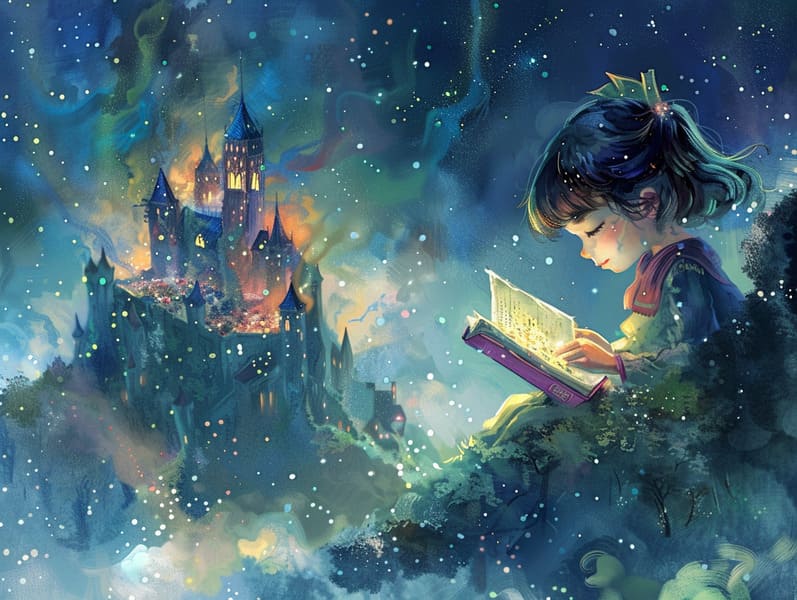A Brief History of Popular Fairy Tales with Their Enduring Beauty.
A Brief History of Popular Fairy Tales with Their Enduring Beauty.
Blog Article

Fairy tales have historical significance. These tales have been conveyed from one generation to the next far before they were ever published. They came from a variety of civilizations, including Asian traditions. They were initially disseminated among mature audiences, often carrying themes and messages concerning the societal norms and beliefs of the time.
The famous Grimm duo, Jacob and Wilhelm, were among the first to gather many of these beloved stories. Their published works, "Grimm's Children's Stories," included tales like "Cinderella," "Hansel and Grethel," and "Snow-White and Rose-Red," which have since become pillars in the world of children's fairy tales. Similarly, Hans Andersen's charming stories, such as "The Little Mermaid," and "The Duckling's Story," have stolen hearts worldwide, guaranteeing their place in the pantheon of beloved fairy tales.
Despite their ancient origins, these stories remain as pertinent as ever, especially as bedtime stories for kids. These delightful tales are now available in different formats, including vividly illustrated books, magical animations, and online fairy tales.
Their continued relevance can be linked to several enchanting factors:
Vital Lessons: Timeless fairy tales often whisper important moral lessons. Fairy tales like "The Boy Who Cried Wolf" teach the virtue of truthfulness, while "The Tortoise and the Hare" demonstrate the qualities of tenacity and unpretentiousness. These narratives offer the young clear distinctions between good and bad, helping to shape their moral compass in a gentle yet meaningful way.
Compassion and Insight: Timeless fairy tales frequently showcase characters facing challenges and struggles, urging audiences to identify with their struggles and encourage their triumphs. For instance, "The Tale of Beauty and the Beast" demonstrates the importance of looking deeper to acknowledge the real character of a person, advancing perception and awareness.
Cultural Knowledge: Many classic fairy tales are imbued with the cultural contexts from which they came. Discovering these stories can provide fascinating glimpses into different ways of life, encouraging a sense of cultural respect and discernment.
Creativity and Fantasy: The enchanted elements in timeless fairy tales—enchanted forests—awaken children’s fantastical thinking. These fairy tales transport readers to fantasy realms, revitalizing creative thinking and a sense of astonishment that endures a lifetime.
Timeless fairy tales are not only charming but also instructive. They provide bewitching tools in developing various mind and heart abilities in little ones. When old fairy tales are read aloud, they strengthen language skills by teaching new terms and detailed sentence structures. This practice also fosters hearing abilities and mindfulness, as little ones hang on every word, anxious to see what happens next.
Furthermore, debating the themes and characters of traditional fairy tales can enhance critical thinking and critical thinking. Children are led to discover patterns, foresee events, and grasp cause and effect. These debates also further the young reveal their thoughts and feelings, nurturing their emotional intelligence.
In today’s technological era, the prevalence of online storybooks has made these stories more acquirable than ever. Internet resources and software provide vast collections of Grimm's fairy tales that can be seen or heard more info anytime, anywhere. Fairy tales told out loud are particularly liked, supplying an delightful method for little ones to be a part of these enchanting tales. Spoken stories and read-to-me stories lead characters and settings to life, often supplemented by bewitching background sounds and melodies that enhance the storytelling journey.
The unfading fascination of ancient fairy tales lies in their ability to evolve to new eras while sustaining their basic principles. Contemporary adaptations of these fairy tales often highlight more different protagonists and modern settings, making them relatable to today’s audience. However, the core values of boldness, goodness, and even-handedness remain unchanged, continuing to influence young listeners of all ages.
Classic fairy tales also offer a sense of warmth and understanding. They allow a systematic narrative with a recognizable beginning, middle, and end, often drawing to a close with the culmination of conflicts and the triumph of right over wrong. This steadiness can be comforting for young readers, rendering a sense of firmness in an inconstant world.
Timeless fairy tales continue to spellbind and teach new generations, maintaining their attraction and relevance in modern society. As bedtime stories for kids, they give a perfect blend of fantasy and learning, enriching moral values, empathy, and creativity. The abundance of internet fairy tales and the commonness of fairy tales recited warrant that these classic tales remain available to new generations.
By sustaining and broadcasting these tales, we continue to cherish the rich tapestry of fantasy and cultural heritage. Whether you are reading a artistically illustrated book, seeing a digital library, or listening on an audio story, the beauty of bedtime fairy tales is always within reach. These fairy tales point out of the steadfast spell of narratives and its ability to unite us across generations and cultures.
Regardless if you are delving into a gorgeously illustrated book, seeing a virtual library, or listening via an read-aloud story, the magic of ancient fairy tales is always within reach.
These tales show us of the steadfast effect of fairy tales and its ability to unite us across epochs and places, creating a bond that captivates and teaches alike.